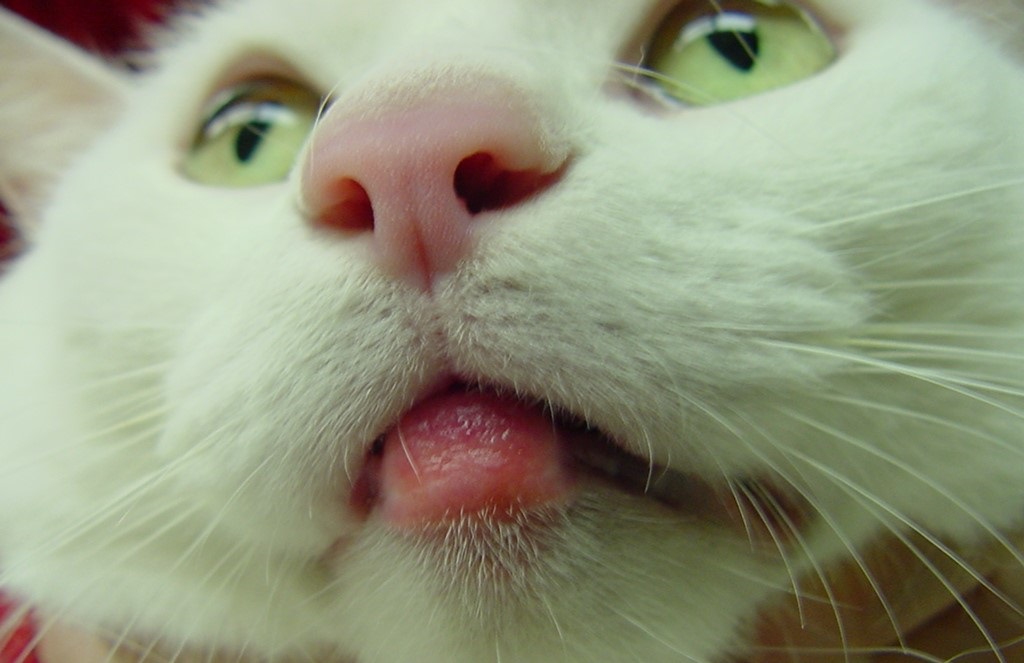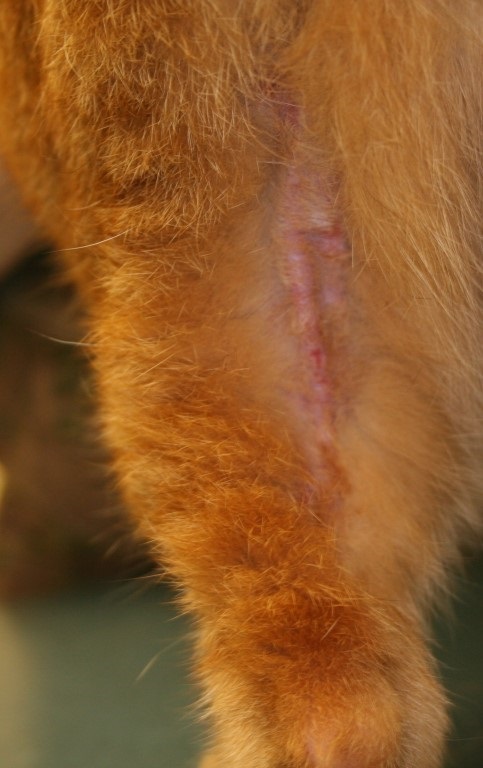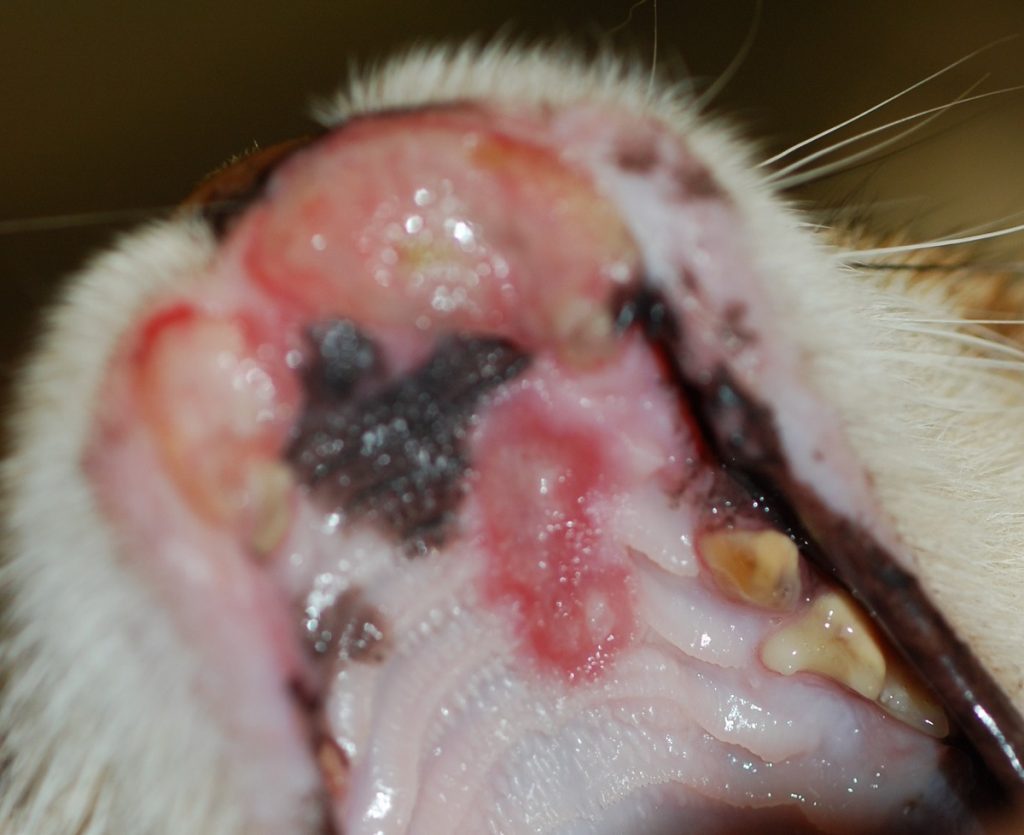Derm Spotlight: Feline Eosinophilic Granuloma skin condition

Feline with a swollen and firm bottom lip also known as a feline eosinophilic granuloma.

Feline with a linear swelling on the back of the thigh also known as a feline eosinophilic granuloma.

Feline with ulcerations inside the mouth on the hard palate also known as a feline eosinophilic granuloma.
What is it?
Feline eosinophilic granuloma is an inflammatory/allergic disease that can involve the skin anywhere on the body, the lips and/or the mouth of a cat. It is considered a unique reaction pattern in allergic cats.
What causes it?
The skin changes are associated with an underlying hypersensitivity/allergy, most commonly associated with flea allergy. Sometimes the underlying changes can be due to a food or an environmental allergy. When associated with a flea allergy, a flea is usually not found on the affected patient.
What does it look like?
The skin may have one lesion or more and may appear as a swollen lip, linear swellings on the back legs, nodular swelling on the skin, and/or ulcerations of the lip or inside the mouth (tongue and hard palate).

Cytology from an eosinophilic granuloma shows multiple cells with a purple nucleus and pink cytoplasm that appear granular. These are eosinophils.
How is it diagnosed?
The diagnosis is based on history, clinical findings, cytology, and by ruling out other causes. Cytology of the skin changes reveal multiple inflammatory cells called eosinophils.
How is it treated?
The underlying allergy must be identified and managed. This includes regular flea control, and/or a food trial and/or allergy testing for environmental allergy. The symptoms tend to improve with antihistamines and short-term steroid therapy. However, in order to prevent a relapse of the symptoms the underlying allergy must be identified and addressed.
If you have questions about a pet with similar skin changes in your household please contact ADRC to schedule an appointment.
Additional Reading and Sources….
1. Hnilica, KA. Small Animal Dermatology, 3rd Edition. Elsevier St. Louis Missouri 2011. Page 210.
2. Campbell, KL, Griffin, CE, Miller, WH. Muller & Kirk’s Small Animal Dermatology, 7th edition. Elsevier St. Louis Missouri 2013. Pages 707-708.
- Dec, 21, 2020
- Disease Spotlight

